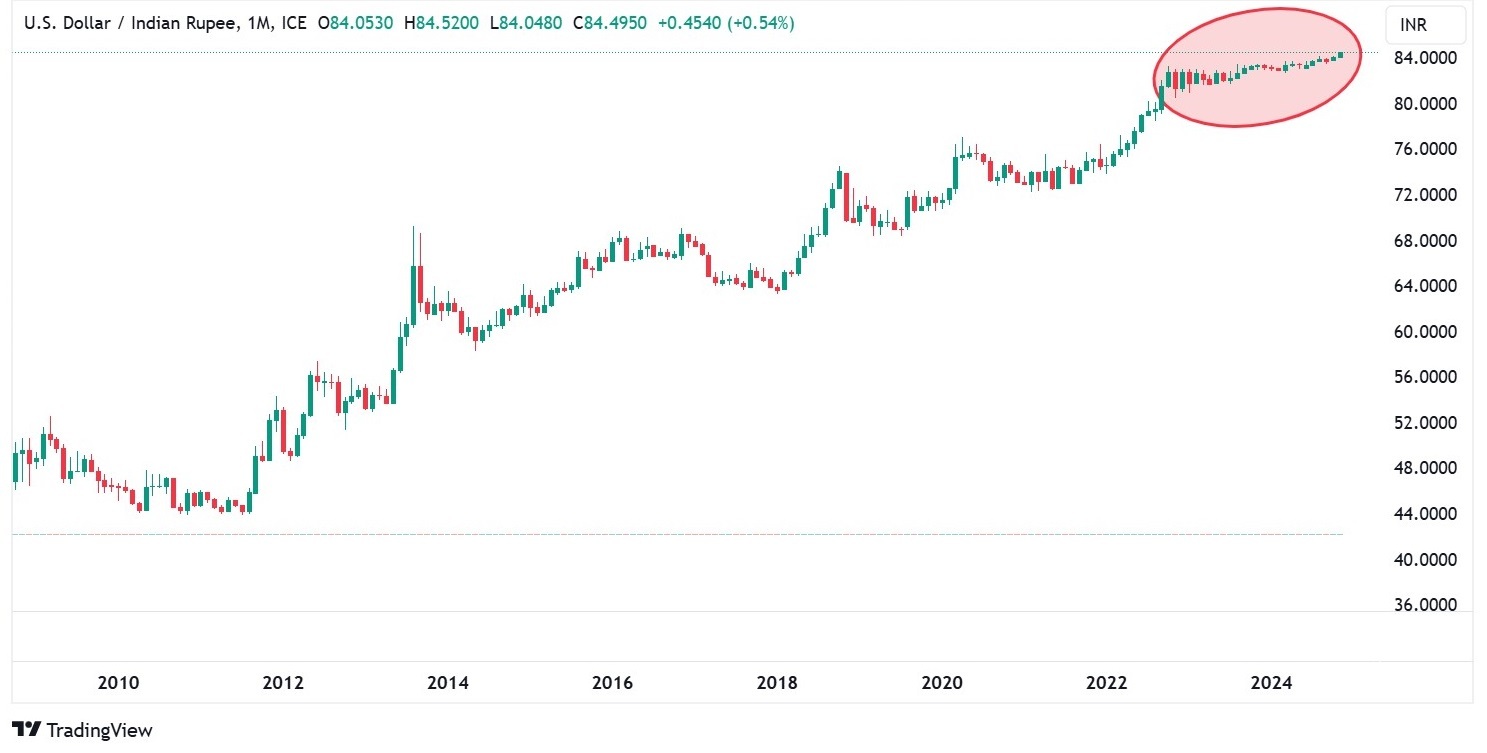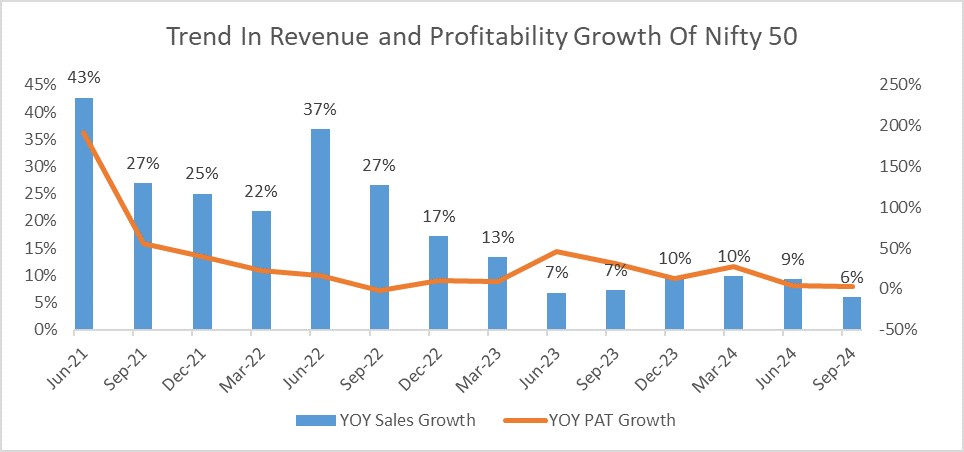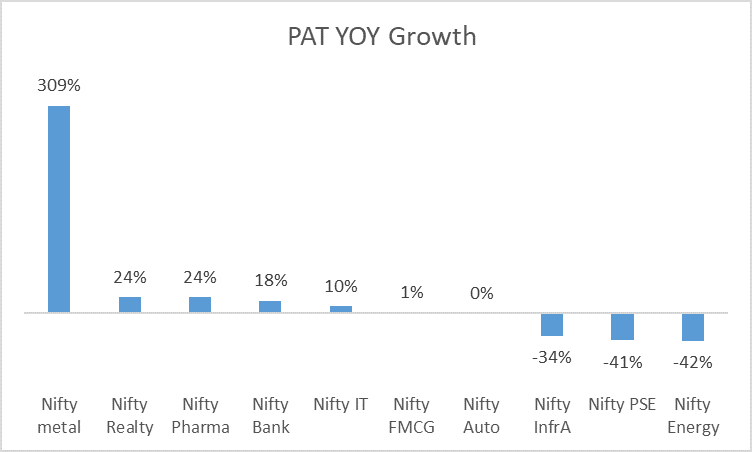Stock Market Updates for November, 2024
29th November, 2024
Rupee on the Edge: Implications for the Indian Economy and Markets
The Indian rupee’s weakening against the US dollar has become a focal point in economic discussions. In this article, I highlighted how Trump’s presidency in the US could strengthen the dollar against emerging economies. This depreciation of the Indian rupee creates a ripple effect across various sectors of the economy, affecting imports, exports, and investor sentiment. While a weaker rupee has both winners and losers, its broader impact requires a closer look.
The Rising Cost of Imports
India relies heavily on imports, especially crude oil, which constitutes a significant portion of the country’s energy consumption. A depreciating rupee directly inflates the cost of these imports, even if volumes remain unchanged. This, in turn, triggers a chain reaction: higher fuel costs lead to increased prices for petrol, aviation, and even goods like plastics and fertilizers.
Moreover, sectors that rely on commodities such as metals and electronics feel the impact of a weaker rupee because their production relies heavily on imported commodities. Companies with substantial overseas borrowings face higher repayment costs, negatively affecting their balance sheets.
How does this impact the economy and businesses? Rising inflation means people have to spend more money to buy the same goods, leaving them with less to spend on other things. At the same time, businesses that rely on imported materials face higher costs, making it more expensive for them to operate.
A Silver Lining for Exporters
On the flip side, a weaker rupee often benefits export-oriented sectors. The IT and pharmaceutical industries, which derive a large portion of their revenues from the US and Europe, experience a boost in earnings when converted to rupees. Similarly, India’s textile sector stands to gain as global companies diversify their supply chains away from China, positioning India as a favorable alternative.
However, it’s important to note that currency depreciation alone does not automatically make exports more competitive. Factors such as global demand, trade policies, and input costs also play a crucial role in determining export growth.
The Role of the RBI
Now here’s how the Reserve Bank of India (RBI) plays a critical role in managing the rupee’s volatility. The RBI intervenes skillfully to prevent excessive fluctuations. It stabilizes the volatility by either buying or selling foreign currency from its reserves. The RBI has taken a more proactive stance, accumulating reserves during periods of foreign inflows and deploying them when the rupee faces downward pressure. This intervention not only stabilizes the currency but also instills confidence among foreign investors.
In the below image, the circled region represents the current consolidation near the 84-mark, indicating the rupee is hovering around its historical low levels but showing signs of stability. The Reserve Bank of India has been actively managing volatility by utilizing its forex reserves, preventing a sharper fall beyond 84.

While a weak rupee presents opportunities for certain sectors, it poses challenges for others, particularly those reliant on imports. The RBI’s approach aims to strike a balance between supporting economic growth and controlling inflation.
A stable currency is not just about numbers on a chart—it reflects the health of the economy. Managing currency volatility remains a critical component of its economic strategy.
22nd November, 2024
India Inc: Key Takeaways from Q2FY25 Earnings Season
The Q2 FY25 earnings season for Nifty 50 constituents showcased a mixed bag of performances across sectors, reflecting the dynamic interplay of macroeconomic conditions, consumer trends, and industry-specific challenges. While certain sectors like Pharma and Realty demonstrated robust growth driven by strong demand and operational efficiencies, others like Energy and Infrastructure faced headwinds in profitability. This period highlighted the resilience of companies adapting to inflationary pressures, evolving consumer preferences, and policy-driven catalysts.

As market participants, these insights provide valuable context for sector-specific trends and corporate strategies shaping the broader market trajectory. Below, we delve into sector-wise financial performance and management commentaries to better understand the drivers of growth and challenges during the quarter.
_1732271332.png)

Nifty Bank
The banking sector had a decent quarter, with revenue rising 16% YoY and net earnings growing 18% YoY. Growth was supported by robust demand for personal and home loans, though commercial lending remained moderate. The sector faced some contraction in CASA ratios, leading to increased funding costs and slightly lower or stable Net Interest Margins (NIMs). However, a decline in Gross and Net NPAs reflects continued improvements in asset quality.
Nifty FMCG
The FMCG sector reported muted growth, with revenue up by only 7% YoY and profits increasing marginally by 1% YoY. Challenges stemmed from uneven rainfall, higher food inflation, and delayed festive demand, which impacted rural consumption—a key growth driver for the sector. Optimism for H2 FY25 remains high, driven by expectations of a revival in rural demand, boosted by government spending, festive, and wedding-related consumption. Companies have responded by increasing advertising efforts and introducing innovative product launches.
Nifty Auto
The auto sector faced a sluggish quarter, with revenue rising a modest 4% YoY, while profits remained muted. Two-wheeler sales were affected by rising input costs and muted rural demand, whereas SUVs witnessed healthy demand growth. The slow quarter also coincided with a Sharada an inauspicious period (based on cultural factors). Looking ahead, festive season sales, rural demand recovery, and increasing penetration of EVs are expected to drive growth.
Nifty Pharma
The Pharma sector outperformed, with revenue growing 10% YoY and profits surging 24% YoY. Growth was supported by strong export demand, especially for generic and specialty drugs, as well as a stabilization in raw material costs. On the domestic front, chronic therapies like diabetes and cardiovascular drugs drove sales, while acute therapy growth remained subdued. Enhanced operational efficiencies and cost controls further improved profitability.
Nifty Realty
The realty sector enjoyed a strong quarter, with higher revenue and earnings. Key growth drivers included robust residential demand, new launches, and declining debt levels. Additionally, government policies aimed at promoting affordable housing solutions boosted sentiment. Commercial real estate also contributed positively to profitability.
Nifty Infra
The infrastructure sector posted a disappointing quarter, with revenue increased by mere 3% YoY and profits plunging 34% YoY. A slowdown in government project announcements and the impact of the monsoon season weakened demand for input materials like cement, leading to pressure on developers and producers alike.
Nifty Metal
While revenue for the metals sector remained flat, profits soared due to operational efficiencies, cost reductions, and improved EBITDA margins. The absence of abnormal losses from the previous year, combined with some one-time gains this quarter, contributed significantly to the sector's profitability.
Nifty Energy
Energy companies faced a tough quarter, with revenue growing 1% YoY and profits declining sharply by 42% YoY. This was attributed to weakened demand, higher input costs, and margin compression in core businesses.
Nifty IT
The IT sector delivered a resilient performance, with revenue growing 6% YoY and profits rising a robust 10% YoY. Growth was fueled by large deal wins, strong traction in manufacturing, retail, and life sciences, and a focus on AI and digital transformation services.
Conclusion
The Q2 FY25 results reflect the varying impact of external headwinds, sector-specific dynamics, and internal strategic initiatives on Nifty 50 constituents. While some sectors, like Pharma, Realty, and Metals, leveraged structural tailwinds and operational efficiencies, others, including Energy and Infrastructure, faced profitability challenges. Looking ahead, optimism remains for a stronger H2 FY25 as sectors gear up for festive demand, rural recovery, and investments in innovation and digital transformation. As the market evolves, a balanced approach between defensive and cyclical plays will remain key for sustained portfolio performance.
8th November, 2024
Trump's Victory: What It Means for India's Markets and Key Sectors
The recent election of Donald Trump as U.S. President is likely to send ripples through global markets, and India is uniquely positioned to experience both opportunities and challenges. From shifts in the USD-INR exchange rate to sectoral impact, understanding these trends is crucial for investors. Below is a breakdown of the potential effects across key areas like currency, bond yields, sectors, and commodities; highlighting what Indian investors should keep an eye on in the coming months.
1. USD-INR Exchange Rate
Historically, Trump’s presidency has focused on policies favoring domestic business growth. If we see a similar approach this term, expectations of corporate tax cuts and a stance on trade protectionism could further boost the dollar’s strength against emerging market currencies. For India, a stronger dollar means that imports may become more costly, potentially increasing inflation pressures. However, it’s also a potential positive for Indian exporters, who may find their goods more competitively priced in the global market. Investors would be wise to monitor USD-INR closely, as currency fluctuations can have varying impacts across sectors.
2. Bond Yields and Foreign Institutional Investment (FII) Flows
A Trump victory is likely to drive U.S. bond yields higher, especially if pro-business policies and fiscal spending increase inflation expectations. U.S. bond yields typically rise with higher demand for debt to fund economic growth initiatives, which in turn could draw global capital flows back to the U.S. For Indian markets, this could mean a decrease in foreign investment, as higher yields offer competitive returns for investors in the U.S., with the possibility of pulling capital away from emerging markets like India. This shift in FII flows could lead to volatility in Indian bond yields and potential outflows from Indian equities as investors seek higher returns in the U.S.
3. Indian Equity Market: Potential Winners and Challenges
India’s equity market may experience volatility initially, as policies take shape and FII sentiment shifts. However, certain sectors stand to benefit while others may face headwinds.
Potential Winners
IT Services: Trump’s ‘America First’ policies may lead to trade tensions, especially with China, which could boost India as a secondary hub for outsourced services and manufacturing. IT services companies in India, may benefit from continued demand for outsourcing, especially given their reliance on U.S. based clients.
Pharmaceuticals: The new administration is likely to cap prices on essential, high-demand medicines, potentially reducing current profit margins. However, this move is not expected to impact overall demand or supply, resulting in only a modest margin reduction.
Financial Sector: The Indian financial sector could be impacted by changes in global capital flows due to Trump’s pro-business stance. A stronger U.S. dollar might attract capital back to the U.S., which could affect FII inflows into India. Higher U.S. bond yields may also increase borrowing costs globally, impacting Indian banks and NBFCs. However, robust India-U.S. trade relations and continued U.S. economic growth could help financial services in India to an extent.
Metals Sector: Trump's emphasis on boosting U.S. manufacturing is likely to drive up demand for metals in the U.S., possibly raising global metal prices. If he implements tariffs on China then it could benefit Indian metal producers, especially those exporting to the US. Trump’s policies may lead to increased infrastructure spending in the US., it could further support demand for metals like steel and aluminum, potentially raising prices and boosting profits for Indian metal companies.
Infrastructure and Real Estate: Trump’s policies might boost US growth, pushing up global material prices, which could make construction more expensive in India. On the other hand, a stronger dollar might encourage NRIs to invest in Indian real estate, leveraging favorable exchange rates.
Likely Laggards
Automobiles: The auto sector may face challenges if Trump reintroduces tariffs or increases import taxes, especially affecting Indian manufacturers that rely on US parts or have substantial export exposure. A stronger dollar may make imports more expensive, adding cost pressures to Indian auto production.
Renewable Energy: With Trump’s preference for traditional fossil fuels, demand for renewable energy technologies may decline, potentially slowing global investments in renewables. Indian firms with international renewable energy ties may see weaker momentum if fossil fuel investments rise globally, overshadowing renewable initiatives.
4. Commodities and Bitcoin
Gold: Trump’s history of aggressive trade policies and geopolitical tensions could drive investors towards safe-haven assets like gold, boosting its demand and price. For Indian investors, strong performance in gold can act as a hedge, offsetting some of the risks associated with equities during periods of market volatility.
Bitcoin and Cryptocurrencies: His pro-business approach could indirectly benefit Bitcoin if inflation fears arise. On the other hand, tighter crypto regulations under his leadership could create market volatility.
5. Broader Impact on Commodities
Trump’s focus on fossil fuels and deregulation could lead to higher global oil and natural gas prices, given potential increases in US production and fewer restrictions on drilling. For India, this may translate to higher import costs for oil, impacting fuel-sensitive sectors like transportation and aviation. In contrast, agricultural commodities might see mixed results. For example, trade tensions with China could lead to price volatility for certain agricultural exports, adding uncertainty to global markets.
Conclusion
In summary, Trump’s policies bring both short-term volatility and potential long-term shifts in market dynamics. For Indian investors, the key will be closely tracking trade patterns, FII flows, and commodity prices to make informed investment decisions. For those looking to balance growth with risk, established sectors that exhibit value-based growth may offer strong opportunities even amid uncertainty.

 Easy & quick
Easy & quick